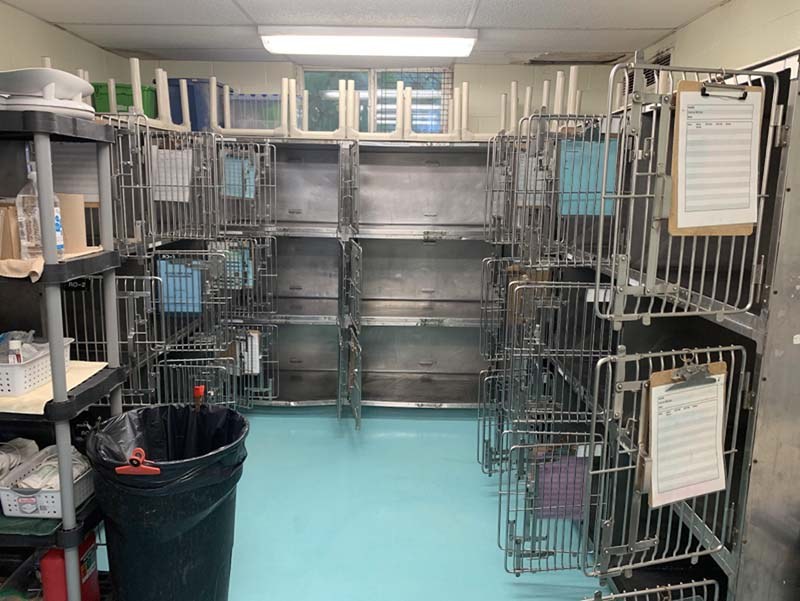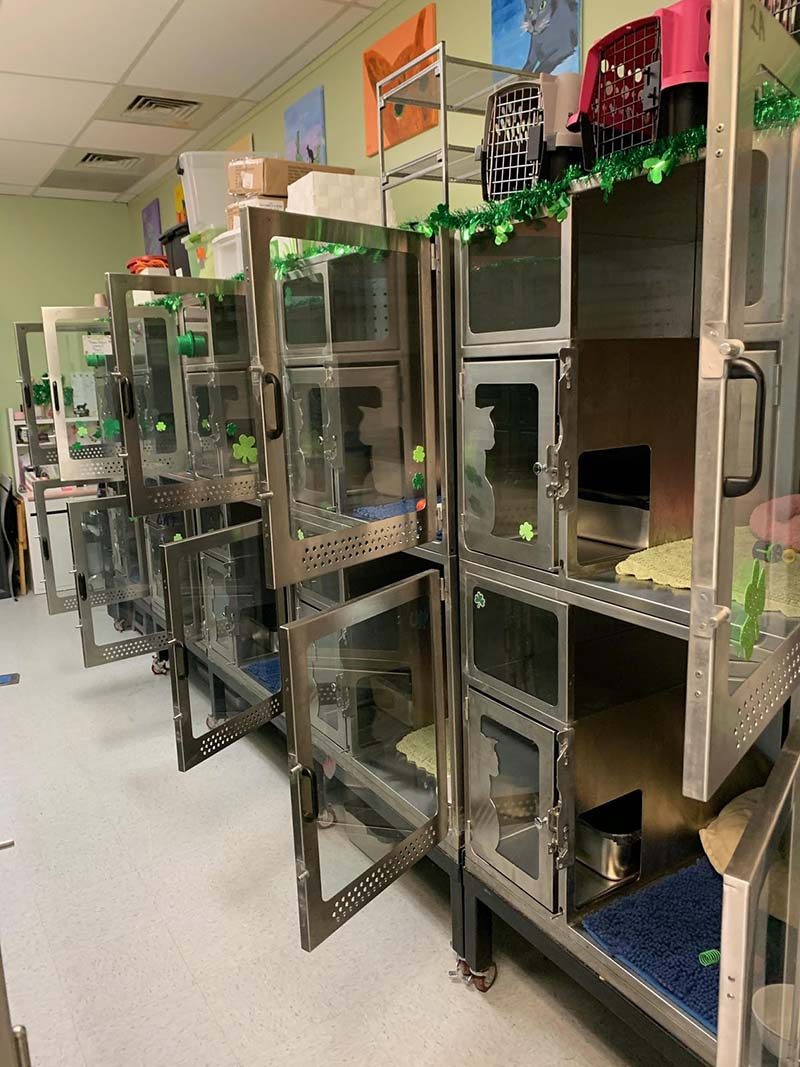Animal shelter workers can tell you -- shelters tend to make cats sick.
Traditional shelters, with all of our associated problems, are undoubtedly the single greatest underlying risk for feline respiratory diseases, and a host of other communicable diseases like calicivirus and ringworm.
With an increased population of animals and higher contact rate between them, cats can get sick in even the best shelters. Worse yet, the shelter is a stressful place for animals, particularly cats which makes them more prone to illness.
How has that changed in times of COVID? What’s the good news for cats? At Austin Pets Alive! 93% of all cats are in foster homes versus living onsite at the shelter. That means great things for cat health.
URI has been linked to higher stress, increased risk for euthanasia and lower save rates. [Gourkow, 2001; Klahn et al., 2005]. Because we know URI to be so strongly associated with stress levels, sometimes the best medicine is to get cats out of the shelter and into foster homes. With 93% of cats in foster care, Austin Pets Alive! is witnessing an unprecedented drop in routine URI cases with its feline isolation wards down 23% in capacity.
With more cats in foster homes and less in the shelter, calicivirus simply cannot be spread with the same tenacity it can in the traditional shelter environment. For the first time in five years, the Calicivirus Treatment Ward at Austin Pets Alive! is completely empty! Normally housing up to fifty cats and kittens, this isolation ward now contains exactly zero felines.

Fewer cats on site, happily living in foster homes instead, means less cats rubbing on and playing with other cats. That means less ringworm! The APA! Ringworm Adoption Center typically houses up to 100 cats and kittens this time of year. But, during COVID? A scant eleven crusty ringworm kittens are all that remain!

Further, we see cats and kittens with ringworm recovering more quickly in foster homes than they would in the adoption center:
“Foster is always the best place to heal from ringworm. Cats are not having to fight off all the germs from being surrounded by other cats. They have more room to relax and someone dedicated to their care, so their immune system can concentrate on fighting the fungus.”- Anita Lunos, APA! Ringworm Manager
As kitten season hits the country, neonates and kittens will only benefit from the foster today wave that has occurred due to COVID. With weaker immune systems, kittens are much more prone to illness in shelter settings where they are exposed to a host of other animals. Cats in foster simply means less feline shelter illness all around. And that is a great thing for cats!
“In regards to FeLV+ cats, we often see a more rapid recovery from common illnesses such as upper respiratory infections in foster homes than while in the shelter. This is most likely due to reduced stress from being outside of the shelter environment and being away from high traffic areas, distractions, and other common sources of anxiety. Even with more serious FeLV related complications, how rapidly certain disease processes progress is often correlated to whether or not they're in a stable foster home, or here at the shelter.”- Josh Crow, APA! FeLV Coordinator